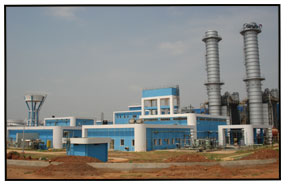
The power sector, despite being on a growth path with significant
investment envisaged, has been a victim of lacunae and
anomalies in policy framework. Every year, hopes are pinned on
the Union Budget and expectations of remedial measures soar
high. This special story attempts to provide an overview of
expectations from the Union Budget: 2012 that is
scheduled to be presented on March 15, 2012.
This story, based on views collected from
industry associations, companies and even
think-tanks, covers a wide spectrum of the power
and electrical equipment industry.
A large body of the Budget expectations revolved
around rationalization of indirect taxes like excise
duty, customs duty, SAD, etc. Be it electrical
equipment or electronics industry, India is
witnessing substantial growth in imports of finished
products. This is hurting the domestic manufacturers.
Industry associations like IEEMA and ELCINA are looking
forward to making imports of finished equipments costlier
through imposition of appropriate duties. Besides, companies
are keenly awaiting the introduction of GST(Goods &
Services Tax) that is scheduled for April 2012.
SERVICE TAX EXEMPTIONS
Amongst the major recommendations by apex industry body
IEEMA has been the issue of service tax on power projects.
The apex organisation has appealed to the government for
extending service tax exemption to all power projects,
including power generation, transmission and distribution
projects in line with other infrastructure projects like roads,
airports, ports, railways, transport terminals, etc.
According to Ramesh Chandak, President, IEEMA, the
domestic electrical equipment manufacturing industry
suffers a substantial cost disadvantage of 14 per cent vis-à-vis
imports while supplying to power projects due to many local
taxes such as VAT, entry tax/Octroi; higher financing cost;
NIL or low customs duty project imports; lack of quality
infrastructure; dependence on foreign sources for critical raw
material and components, etc.
IEEMA also feels that as per the recommendations of the
Arun Maira Committee, the government should provide a
level playing field to domestic manufacturers by making
having a duty structure as 10 per cent customs duty, nil CVD
and 4 per cent SAD on all categories of power projects.
Simultaneously, deemed export benefits in the form of
excise duty exemption and refund be provided to the
domestic suppliers.
CRGO Steel |
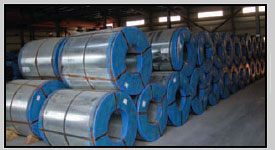 IEEMA, in its pre-Budget memoranda submitted to the
government of India, has recommended that imports of cold
rolled grain oriented (CRGO) electrical steel should be allowed
at nil duty. Currently, CRGO still attracts basic customs duty
although the special additional duty (SAD) has been removed.
IEEMA feels that imports should be allowed at nil duty at least till
India starts producing CRGO domestically. IEEMA, in its pre-Budget memoranda submitted to the
government of India, has recommended that imports of cold
rolled grain oriented (CRGO) electrical steel should be allowed
at nil duty. Currently, CRGO still attracts basic customs duty
although the special additional duty (SAD) has been removed.
IEEMA feels that imports should be allowed at nil duty at least till
India starts producing CRGO domestically.
CRGO is a critical input used in the making of power and
distribution transformers. India currently consumes around 2 lakh
tonnes of CRGO per year, and this is expected to rise in the coming
years in keeping with higher demand for transformers. For the entire
XII Plan (2012-17), domestic consumption of
CRGO steel is expected to be 11.5 lakh tonnes,
likely to rise to 13.5 lakh tonnes in the XIII Plan
period (2017-22).
CRGO has been amongst the most interesting
and even controversial subject of India's power
equipment industry. India has never been able
to produce CRGO locally. Hence, the
dependence on imports is inevitable. What has been a worrisome
feature of the industry is the rampant dumping of uncertified CRGO
that is more often than not of substandard (non-prime) grade. There
is no way for Indian importers to know the quality of the CRGO
imported, resulting in inadvertent usage of scrap CRGO.
Over the past two years or so, there have been some local
developments that could have a positive bearing on the CRGO
equation in India:
Quality Control Order: In June 2011, the government promulgated an
order that required all CRGO steel used in India to bear BIS certification.
This move is expected to put a check on the usage of substandard
CRGO in India. Some international suppliers have already started
complying with these guidelines and have started imprinting BIS
certification on their CRGO steel meant for Indian consumption.
Transformer manufacturers are very hopeful of the quality control order
bringing some relief to the anarchies prevailing in CRGO trade.
B. Lal, Secretary-General, ITMA, noted, "For the transformer
sector, checking the quality of imported steel is important. We are
awaiting the gazette-notification of the steel ministry's order of June
24, 2011. Once it is done, all manufacturers of steel and steel
products shall make an application to the Bureau of Indian
Standards for obtaining license for use of the standard mark. This
will also include the foreign producers."
BEE certification: With a view to ensuring
that only efficient distribution transformers
are pressed into service, Bureau of Energy
Efficiency (BEE) has made it mandatory for
distribution transformers to have a minimum
of 1-star rating. This move is expected to
encourage transformers manufacturers to
use prime grade CRGO. Manufacturers in the unorganized sector
that are known to willfully use cheap CRGO with a view to cutting
costs, might now be encouraged to go in for quality material,
analysts feel.
Domestic production: Public sector entities Steel Authority of
India, Bharat Heavy Electricals and Rashtriya Ispat Nigam last year
decided to set up a joint venture to manufacture special-grade steel
including CRGO and CRNGO steel. To be set up with an investment
of Rs.3,000 crore, this is expected to be India's first unit for
production of CRGO and CRNGO steel. The three companies are
believed to be in talks with global suppliers of this technology.
|
IEEMA also pointed out that all imports are exempted
from levy of CST/VAT, while all domestic supplies attract
CST at 2 per cent and VAT from 5 per cent to 14.5 per cent.
Although, the state governments were advised to exempt
supplies to mega power projects from sales tax and other
local levies and not to consider such levies for evaluation of
bids; yet many states are not accepting this de-loading
principle and evaluate bids taking these levies into account
nor any exemption is provided by any of the states from such
levies. IEEMA has recommended that either there should be
mandatory exemption of CST/VAT for mega / ultra mega
power projects or these levies should be excluded for the
purpose of bid evaluation.
PRICE VARIATION FORMULA
IEEMA has observed that domestic suppliers suffer huge
financial burden due to demand of interest on differential
excise duty in cases where there is determination of cost of
raw materials on the basis of a price variation formula.
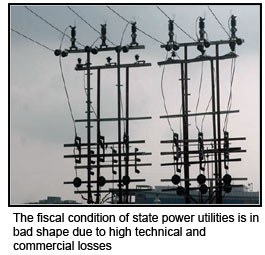
In these supplies, an agreed contractual price is charged and
appropriate excise duty is paid on the day of clearance.
However, there is a delay in publishing of applicable indices, for reasons beyond the control of the suppliers. As soon as the
indices are known, a supplementary invoice is raised by the
suppliers and differential excise duty is promptly deposited.
However, the excise authorities treat this as delayed payment.
IEEMA has suggested that an amendment in Sub-Rule 4 of
Rule 7 of Central Excise Rules 2002 is required for replacing
the wordings 'the month for which the duty is determined' by
'the month in which the duty is determined' in order to
remove applicability of interest in these cases.
Regarding excise duty exemptions, IEEMA has observed
that there is no excise duty exemption on steel and cement
supplied to mega power projects (including UMPP) as the
corresponding exemption notification of customs duty has
been made applicable only to tariff heading 9801 (Chapter
98). IEEMA has suggested that this anomaly be removed
and the customs notification be extended to "any chapter."
TAX HOLIDAY
The power sector historically is entitled to tax holidays under
section 80-IA of the Income Tax Act, observed Amol Kotwal, Deputy Director, Energy & Power Systems Practice, Frost &
Sullivan - South Asia, Middle East and North Africa. Over the
past 2-3 years, the tax holiday is being extended on a year-onyear
basis. Currently, the tax holiday is applicable for new
power generation, transmission and distribution projects
being operational before 31-Mar-2012, Kotwal said.
On his expectations on this count, Kotwal felt that tax
holiday should be for a defined period and extended for a
longer duration (approximately for 15-20 years), thereby
providing clarity to project developers in terms of time period
up to when the tax exemptions would be available, which will
facilitate their investment decision making. Simultaneously,
ultra mega power projects and other mega power plants are
likely to turn operational during the 2013-2016 period. Tax
holiday should hence be extended, he proposed.
POLICY & REFORMS
Focus should shift on T&D: While discussing the power
sector, the focus has invariably been on the generation side.
All along, the debate has been about India not been able to
meet the power generation capacity addition targets during
the X and XI Plan periods. Issues discussed have either been
of India's inability to construct power plants on time or the
difficulties around sourcing coal for operational plants. "The
more serious problem is one of under-investment in the
T&D sector," noted Ramesh D. Chandak, MD & CEO, KEC
International Ltd. He noted that the Indian power sector
was in a state of crisis and that it is not only a sectoral
challenge but a subject of national concern. Regarding the
financial morass of the power distribution sector, Chandak
observed that the Shunglu Committee has said that losses of
distribution utilities are in the order of Rs.1 trillion. Banks,
being the major lending agencies, will also eventually face
challenges on this count. The Union Budget therefore must
emphasize on accelerating investment in the power T&D
sector, Chandak felt.
Insulators |
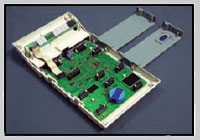 Insulator manufacturers are hopeful that the Union Budget
2012 will increase import duty with a view to curbing imports
from China. According to estimates, Chinese suppliers
currently enjoy a 22 per cent price benefit over Indian
counterparts. This differential comes from a variety of factors
including low import duty of 7.5 per cent and also a host of
concessions offered by the
Chinese government. Over the
past four years, China has been
able to capture a 20 per cent
market share of the Indian
insulator market, reliable reports
suggest. Central transmission
utility Power Grid Corporation of
India Ltd has an investment outlay
of Rs.1 trillion for the XII Plan
period (2012-17) and a fairly
significant part of this will be
towards procurement of insulators. PGCIL has already started
placing orders on Chinese insulator manufacturers, and so have
state power transmission utilities. Sichuan Yibin Global Group is
amongst the several Chinese companies catering to India. Insulator manufacturers are hopeful that the Union Budget
2012 will increase import duty with a view to curbing imports
from China. According to estimates, Chinese suppliers
currently enjoy a 22 per cent price benefit over Indian
counterparts. This differential comes from a variety of factors
including low import duty of 7.5 per cent and also a host of
concessions offered by the
Chinese government. Over the
past four years, China has been
able to capture a 20 per cent
market share of the Indian
insulator market, reliable reports
suggest. Central transmission
utility Power Grid Corporation of
India Ltd has an investment outlay
of Rs.1 trillion for the XII Plan
period (2012-17) and a fairly
significant part of this will be
towards procurement of insulators. PGCIL has already started
placing orders on Chinese insulator manufacturers, and so have
state power transmission utilities. Sichuan Yibin Global Group is
amongst the several Chinese companies catering to India.
In its Budget 2012 wish list, IEEMA has also cited insulators as
being an instance of inverted duty where the customs duty on raw
material is higher than or equal to that of the finished products.
IEEMA has recommended lowering of the duty on the raw materials
and intermediaries in order to remove these duty anomalies.
|
The power T&D sector needs significantly higher capital
investment in both-systems and hardware, the KEC top
official felt. Transmission lines in India are loaded up to 90 per
cent in India against the world standard of 60-65 per cent.
This is creating over-loading and is reflective of underinvestment
in new infrastructure. For the last 50 years, India
has been able to investment barely half of the desired level of
investment in the T&D sector.
Argentina, Chile and Peru are some countries that made
commendable progress over the past 7-8 years in building
power transmission infrastructure. Discussing the
challenges, Chandak said that securing right-of-way is a big
hurdle and the associated time overruns are resulting in
escalation in cost of project execution.
Power equipment: The Indian electrical equipment
industry was steadily growing at 13-14 per cent annually,
Chandak noted, adding that now the overall growth is barely
4.4 per cent. Imports of electrical equipment, growing at 20
per cent in the recent past, have eroded the domestic
equipment market. In his pre-Budget note, Chandak expected
the government to consider either a strategy for price
preference or levying a customs (or additional) duty to protect
equipment in the power generation as well as T&D sector.
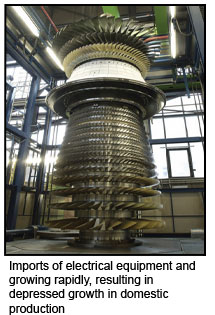
He also said that the Budget should consider increasing
from 15 per cent to 30 per cent the progress rate of
construction equipment used in the power T&D sector as they get outdated very fast from working in open areas.
Chandak also made a case for special exemptions for the T&D
contracting industry that has to execute works in difficult
terrain and geographical conditions like in Jammu & Kashmir,
northeast India and in overseas locations like Afghanistan.
Concurring with the view on imported equipment was
B. Lal, Secretary-General, Indian Transformer
Manufacturers' Association who felt that the tax
structure for imported electrical equipment should be
designed in such a way that it creates a level playing field
for the Indian manufacturers.
Reforms-oriented Budget: The government should
present a reform-oriented budget to help the economy gather
growth momentum, said P.P. Gupta, Managing Director,
Techno Electric & Engineering Co Ltd. Explaining his stand,
he said that the Union Budget: 2012 is coming at a time when
the country is in the midst of an economic downturn.
Government finances remain crippled and an inflated subsidy
bill would continue to pose a challenge. Obstructions in the
form of delays in approval and decision making had stalled
many new projects in the year gone by. For a sustainable and
healthy growth, the country requires an equivalent
investment in the infrastructure arena.
Gupta outlined some of his expectations as:
- Settling the issue of financially and politically bankrupt
state-owned distribution companies
- Reduction in Minimum Alternate Tax (MAT) rate
- Relaxation on applicability of MAT, dividend distribution
tax and capital gains for unlisted special purpose vehicles
formed for infrastructure and power projects
- Extension of eligibility norms of tax holiday incentives for
power generation companies to another couple of years u/s
80IA of the Income Tax Act
- Concrete steps towards creation of a deep and robust debt
capital market to make available long term debt
instruments for infrastructure
- Permit banks to issue long-term tax-saving infrastructure
bonds and enhance participation of banks, financial
institutions and large NBFCs in infrastructure financing
Fiscal health of SEBs: Financial health of most of the State
Electricity Boards (SEBs) in the country is in bad shape due to various reasons such as high technical losses, low power
tariffs etc, said Girish Shirodkar, Global Partner & MD,
Strategic Decisions Group India & Asia Pacific. State
electricity boards are primary purchasers of power production
but because of the bad financial health, most the SEBs are
unable to clear their dues and the losses and debt are mounting
necessitating bail outs by government. Power tariffs in the
country are at very low levels, due to lack of periodic revisions,
and with increasing cost of production due to increase in cost
of coal, the situation is getting worse. Based on CRISIL
estimates, power distribution companies needed to raise
tariffs by 47 per cent just to break even in 2011-12, said
Shirodkar. He summarized his set of solutions to address the
poor fiscal health of state power utilities:
- Periodic revisions of power tariff linked to inflation and cost
of coal (fuel cost constitutes around 70 to 80 per cent of the
total operating cost
- Periodic revision of tariff - Currently, SEBs have to file a
petition for hike in power tariff and many SEBs do not do
this regularly. So a periodic inflation linked hike in power
tariff is required
- Improvement in efficiency of SEBs through greater
performance controls. T&D losses for SEBs is very high as
compared to private operators
- Privatisation of discoms with a target for efficiency
improvement and regulations for viable tariffs
- Ensure proper implementation of the open access policy to
large customers (>1 mw)
Ease of finance: Improving the flow of funds for the power
sector was a key Budget expectation for Anil Sardana,
Managing Director, Tata Power Company Ltd. He noted that
despite the country witnessing power capacity addition of 50
GW in the XI Plan period, urgent policy initiatives were
needed to address key issues that were hindering the growth
of the sector. Sardana hoped that the ensuing Budget would
attempt to improve the flow of funds to the power sector by
revising sectoral lending limits of banks. Other measures to
this effect could be including the power sector in any takeout
financing scheme floated by the government, or relaxation in
external commercial borrowing guidelines for refinance of
power projects. This could be achieved by increasing the rupee
component of debt or raising the quantum of ECB funds for
automatic approval. "We urge the government to usher in
distribution reforms and include electricity under the
purview of GST," concluded Sardana.
Temporary power: The irregularity in the local coal
supply coupled with the rising costs of imported coal is
directly affecting the supply of reliable energy to commercial
and domestic power consumers across the country.
Consequently, access to stable and consistent power has
become a major issue for Indian industry, according to Debajit
Das, Managing Director, Aggreko Asia.
Das further noted, "Utilisation of fast-track interim power
solutions are an excellent way for industries across all sectors
to ensure their businesses stay up and running during the
power crisis. The current restrictions on the import of used power generating sets, the category in which rental
generators are classified, is the single largest constraint in
setting up temporary power plants in India. To ensure
temporary power solutions are readily available to Indian
industry, foreign trade policies should be addressed to better
facilitate the temporary import of used power generating sets
without payments of custom duties and license restrictions
on re-exports. Additionally, reforms in storage regulations for
diesel and LNG will also assist industries to quickly set up
temporary power facilities."
Type-testing: Across the industry, it is an accepted fact
that India's capabilities in the power equipment sector
must grow substantially. Today there is acute dependency
on imports for critical components and material. Rajesh V.
Shah, CMD, High-Volt Electricals Pvt Ltd, feels that the
electrical industry is fully capable of meeting the
challenges in store. However, there are some weak links the
chain. India is found lacking in type-testing, research after
type-testing and also implementation of quality standards.
Shah attributes the situation to lack of type-testing
facilities in the country. The Union Budget should place
emphasis on this aspect and help the country grow its typetesting
infrastructure must grow at least four times. Over
the next two years or so, the country must be equipped to
perform type-testing on any product manufactured by the
electrical industry, Shah felt. Secondly, results of typetesting
done by manufacturers are not available to the
public. Due to this, valuable knowledge cannot be shared.
Agencies CPRI and ERDA should independently take up
this task for which funds should be allocated in the Union
Budget, expressed Shah.
RENEWABLE ENERGY
Given the ongoing thrust on solar power projects, thanks to
the National Solar Mission, there have been expectations
from solar energy players. According to K. Subramanya, CEO,
Tata BP Solar, the Budget could look at endorsing domestic
content and also take steps in correcting anomalies in duties
and taxes.
Subramanya noted that domestic content was mandated
in Phase-I of the National Solar Mission for crystalline
silicon (c-Si) only. This created a loophole that was
massively exploited, skewing the ratio of thin film (100 per
cent imported) to c-Si in India. This resulted in a virtual
shutdown of Indian solar manufacturing facilities. The
Budget could therefore consider imposition of differential
tariff for projects using domestic content.
Railway Budget is equally important |
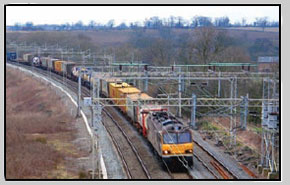 In an exclusive interaction with Electrical
Monitor, Rajesh V. Shah, CMD, High-Volt
Electricals Pvt Ltd observed that the
Railway Budget is as important as the Union
Budget. The railways, thanks to its
electrification works is an important
business driver to the electrical equipment
and T&D contracting space. Shah feels that
the contribution of the domestic electrical
equipment industry to the Railways is
currently very low. He is confident that with some modification,
products made by the domestic industry can be adapted for traction
as well as other railway applications. However, this has generally
not been encouraged by the Railways. One of the reasons is that the
technology gap between foreign countries and India is still very
high. This gap can be bridged, Shah avers, citing the example of
China that has made rapid strides in its trains. Nowhere on the
technology map till ten years ago, China today is planning as many
as 40 super-fast trains clocking speeds of over 200 kmph. In an exclusive interaction with Electrical
Monitor, Rajesh V. Shah, CMD, High-Volt
Electricals Pvt Ltd observed that the
Railway Budget is as important as the Union
Budget. The railways, thanks to its
electrification works is an important
business driver to the electrical equipment
and T&D contracting space. Shah feels that
the contribution of the domestic electrical
equipment industry to the Railways is
currently very low. He is confident that with some modification,
products made by the domestic industry can be adapted for traction
as well as other railway applications. However, this has generally
not been encouraged by the Railways. One of the reasons is that the
technology gap between foreign countries and India is still very
high. This gap can be bridged, Shah avers, citing the example of
China that has made rapid strides in its trains. Nowhere on the
technology map till ten years ago, China today is planning as many
as 40 super-fast trains clocking speeds of over 200 kmph.
Shah observes three principal shortcomings—lack of
technology transfer from overseas railway; insufficient R&D in
India; and the limited role played by Railway
Standards & Design Organisation (RSDO) in
analysis of technical problems.
The Railway Budget could do well in
providing sufficient funds for transfer of
technology (TOT) and for R&D works. This
will enable products to suit Indian
conditions. Shah cited the example of
products bought from Europe that were
tested there, and were found not providing
the same level of service in Indian conditions. In the past, as Shah
recalls, there was a TOT done with a multinational for three-phase
locomotives but due to high costs involved (and due to
insufficient budgets), these locomotives have not yet stabilized
for Indian conditions.
Shah also suggests that the Indian Railways should form a new
department exclusively for technology and system upgradation that
would also engage in field trials and execution. He is also confident
that RSDO can become a world-class facility if more funds and
autonomy are provided for the organisation to have an independent
test laboratory and for carrying out experiments independently.
|
The Tata BP Solar top official observed that both solar
cells and modules are exempt from import duty and excise
duty, resulting in overflow of input credit as some of the
inputs attract duties. It is therefore, requested that the
anomaly of the inverted duty structure is addressed to
make local manufacturing to have equitable treatment
with imports
Subramanya also proposed that the VAT and sales tax on
the manufacture of solar cells and modules be made NIL to
give the domestic solar photovoltaic manufacturing
companies an equitable treatment.
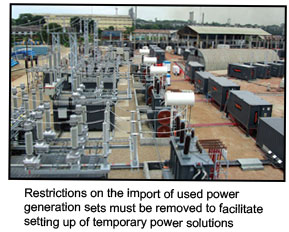 Solar equipment:
Solar equipment: Amol Kotwal, Deputy Director,
Energy & Power Systems Practice, Frost & Sullivan - South
Asia, Middle East and North Africa, pressed for sops for
encouraging local manufacture solar photovoltaic systems.
Kotwal observed that currently there were no specific
incentives from the Union government to promote
manufacturing of solar photovoltaic balance of system
(BoS) equipment like inverters, charge controllers, etc. The
National Solar Mission can potentially result in a huge
demand for BoS. Kotwal thus expected this year's Budget to
offer incentives (tax concessions, investment incentives,
etc) to promote the setting up of manufacturing facilities
in India.
Anomaly in duty structure: K. Subramanya, CEO, Tata
BP Solar, also observed that both solar cells and modules are
exempt from import duty and excise duty resulting in
overflow of input credit as some of the inputs attract duties. It
is, therefore, requested that the anomaly of the inverted duty
structure be addressed to make local manufacturing to have
equitable treatment with imports. In addition, the domestic
solar PV industry is also subject to payment of VAT and sales
tax, which is not applicable for import of cells and modules.
Subramanya thus recommends that the VAT and sales tax on
the manufacture of solar cells and modules be made NIL to
give domestic solar PV manufacturing companies an
equitable treatment.